
From a Tamarindo crowded with local and foreign tourists there is little, or no trace left of it. It is Sunday, July 5th, and even with the start of the mid-year vacation of schools and colleges from all over the country, which is one of the most visited beaches in Guanacaste now looks almost deserted.
There is a street running parallel to the coast, from the estuary to the roundabout at the end of the beach. There are no more quads, bikes with surfboards or people walking in all directions.
It is hard to imagine that 3 months ago that same route of only 2km long was a source of discord between locals, merchants and the municipality. Before that, it was so congested that the town demanded alternate routes to enter Tamarindo beach to avoid possible emergencies.
The general manager of the Capitán Suizo Hotel, UrsSchmit, sums it up as follows: “It used to be a happy, energetic town”. And he finishes: “Needless to say, the nights”.
The party atmosphere, the noise that escaped daily from bars, clubs and restaurants disappeared. At some point, there was so much noise and so many events that the Tamarindo Development Association demanded that the municipality of Santa Cruz draw up a set of regulations that would establish more and more rules for the development of activities in the area.
A study of sonic pollution showed that the noise caused by different events at the end of the year, for example, exceeded what is permitted by the Noise Pollution Control Regulations of the General Healthcare Law.
According to the document, while in a commercial area at night, sound levels were allowed to be a maximum of 55 decibels, in Tamarindo they reached levels of 81 decibels.
But now the concern and priority of the 9th district of Santa Cruz is different: to survive the crisis caused by the COVID-19.
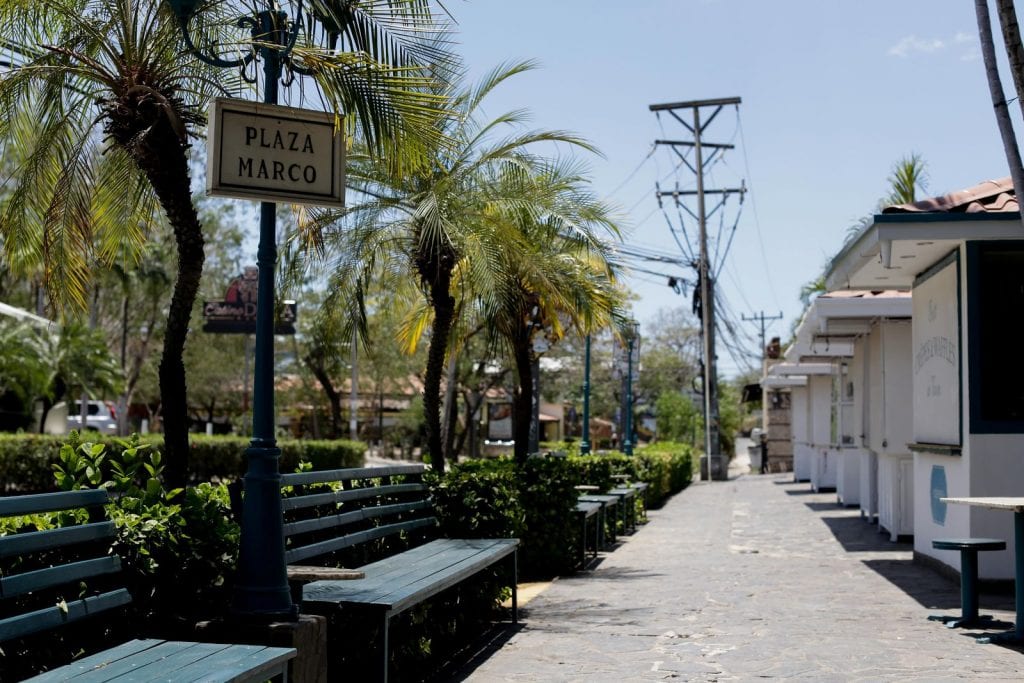
This is the new reality of Tamarindo: closed shops and almost desolate streets. The pandemic forced hundreds of merchants to close their stores since mid-March, when the virus came to stay. The economic losses are significant, according to several owners, but no one really knows the exact numbers.
For how long will the money last?
The Costa Rican Tourism Board (ICT) said that “tourism is the sector most affected by the pandemic”. In Tamarindo, everything, or almost everything, is focused on that activity.
The first blow to the coastal community came with the border closure.
Overall, and according to data from the ICT, the Daniel Oduber Quirós Airport in Guanacaste reported 37,826 international arrivals in March. A 52.5% drop compared to the same month in 2019.
Like many others in the area, the Hotel Capitán Suizo, run by Smith, has a foreign audience as its main customers. Smith says that with the pandemic they were unable to maintain any full-time employees. The hotel has been closed since the end of March.
We had 80 employees. Right now 47 are suspended and the rest are working reduced hours,” he explained.
Though he said that they have made an effort to ensure that none of them lack food. The workers who have had their hours reduced have a minimum income, and those who have been suspended have had food brought to them every two weeks.
“Our concern is the uncertainty of when we will reach positive numbers. I do not think we can open in November, and that does not seem a possible scenario with the peaks of contagion and we are concerned because we will spend the money we have saved,” said the manager.
Data from the ADI in Tamarindo assure that a total of 109 hotels operate there.
A second blow for Tamarindo came with sanitary measures to contain the spread of the virus. First, the Healthcare Department closed the beaches to the general public, and then, a few weeks later, conditioned their opening to a schedule from 5 a.m. to 9:30 a.m.
Therefore, without international and national tourists, the economic situation became more complicated.
Ignacio Holst is the owner of two shops situated along the road in front of the beach. On that Sunday, July 5th, that we visited the place was the first weekend since mid-March that it opened.
For Holst, this “low-profile” opening was a strategy of taking out goods in liquidation and betting on the local and foreign resident of Tamarindo in some way. “What we did was put together some furniture outside [the store] with a bunch of T-shirts that were one size fits all and try our luck,” he said.
He said it is the locals who are taking advantage of the sales opportunities, and secondly, the foreigners who have their home in Tamarindo or were “trapped” by the pandemic.
Like Hotel Capitán Suizo, Holst claims to be living on savings. “With the little movement that there is, what we are doing is finding a way to stay afloat,” he added.
Just like the stores of Holst, several signs outside the restaurants and shops advertise offers such as dishes at 50% or T-shirts on sale to attract a few people and get around the crisis.
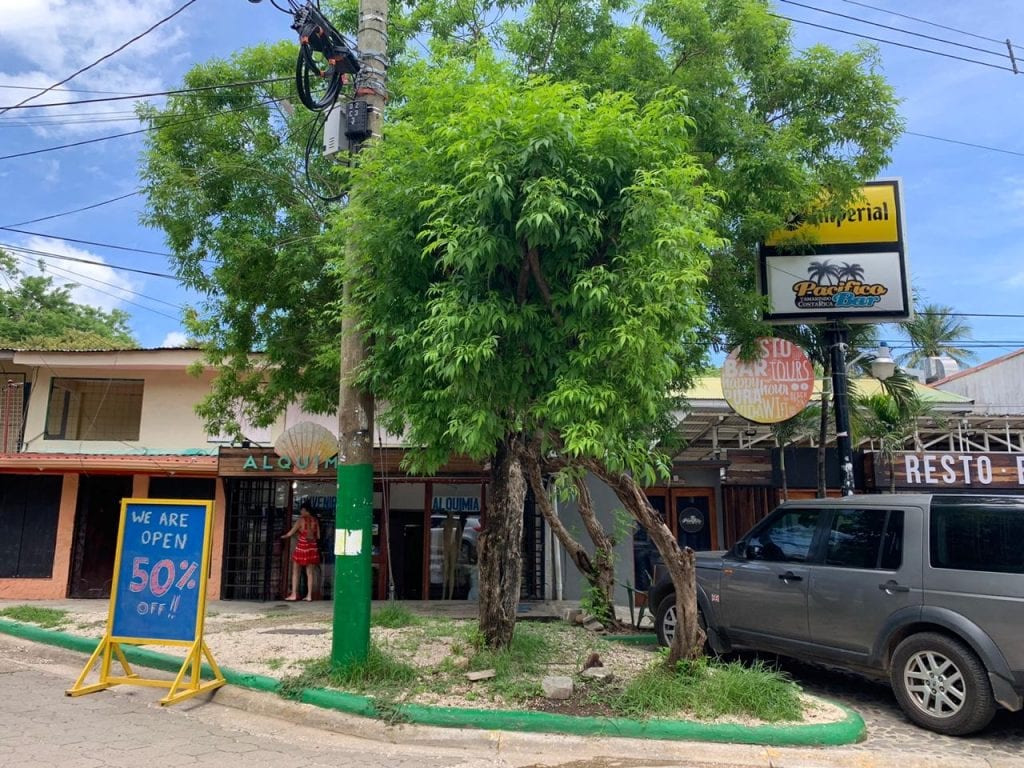
Some of the ways that shop owners, restaurants, and hotels have come up with to get by in the midst of the COVID-19 is to promote offers to attract a new audience: The Costa Rican tourist and local residents. Before, the majority of the public was different: foreigners, but the closure of borders left Tamarindo without its main clients.
Governs for whom
About 100 people from the community of Tamarindo carried out a rally on the main street of the coast on June 24th to demand from the authorities an economic recovery plan exclusively for coastal areas.
Based on an analysis by La Voz de Guanacaste, Tamarindo is the district that contributes the most money to Santa Cruz.
Tamarindo’s businesses and residents contributed ¢1,096 million in tax payments between January 1st and June 30th, 2019, including real estate, garbage collection, patents, and construction taxes, among others. The figure represented 23% of the amount collected by the municipality. This is the highest percentage among the nine districts of the canton.
The media consulted the municipality on how the crisis could affect that level of contribution through the suspension of patents or moratorium on tax payments, however, at the time of writing, it was not possible to obtain the information.
The neighbor of Tamarindo and part of the organizers of the rally, Mitzam Fontiveros, said that it was necessary for the Government to make differentiated measures. According to her, more than 70% of the trade in the place is closed, and the situation that the communities of the district are living “are precarious”.
Eduardo Vargas, project manager of the ADI in Tamarindo, agrees with Fontiveros. In his opinion, the economic measures adopted by the authorities are based on a centralist valley vision and not on criteria differentiated by areas of the country.
They are handling the problem [the pandemic] as if all of Costa Rica were San José,” he said.
Vargas believes the authorities should give the coastal areas tools to survive, such as clear health protocols for adventure tourism, restaurants and hotels.
“Destiny can be prepared with these protocols. In fact, it already follows those that the Healthcare Department demands. If we follow them, the levels of affectation could be minimal. We can make Tamarindo an example of how to manage tourism,” added the project manager.
Holst, from the T-shirt shop, goes even further, saying that local businessmen are even playing a role that should be played by the government.
According to him, many employers have taken on the social responsibility of helping their employees, having the right to make other decisions such as suspending them.
My employees asked for the Protect bonus and none of them got it, so many merchants are trying to help because we know no one will help them. And here it is very important to say: we are not against the Health guidelines,” he said.
Both Vargas and Holst agree that it is our people who are organizing themselves to get ahead. As an example, the ADI highlights how the organization joined with other companies in the area, such as CEPIA, to bring food to more than 500 families.
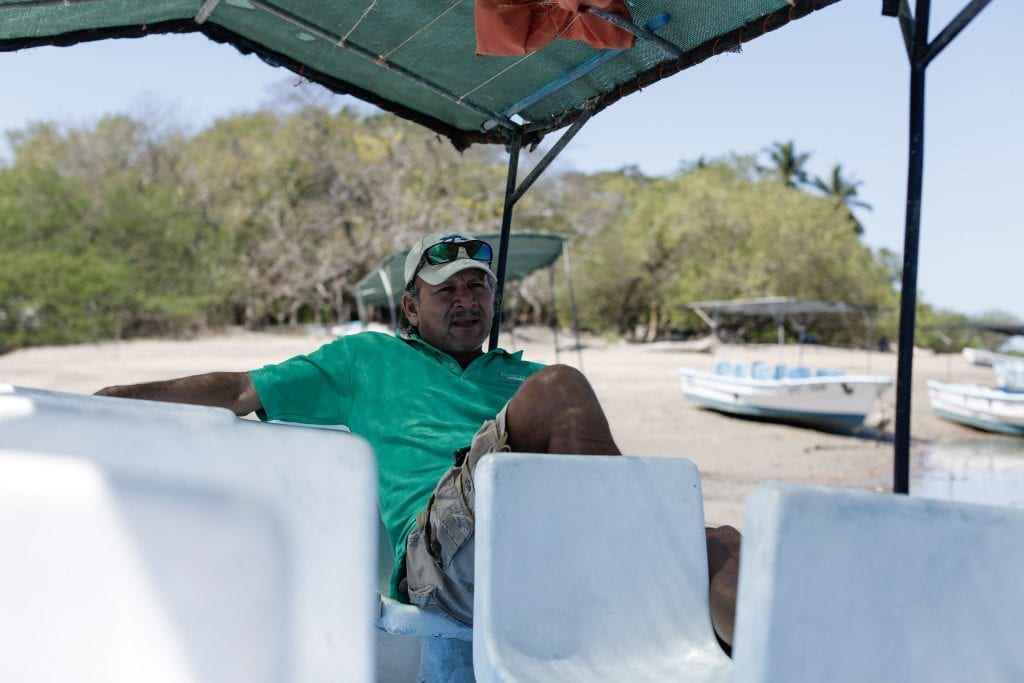
“Las Baulas National Marine Park CLOSED due to national health emergency by covid-19,” says a torn and crumpled paper, held by bugs from a tree in the Tamarindo estuary. A little further on, Daniel Arrieta tries to fill the hours sitting in a boat lying on the sand. “I come from Villarreal to check the boats and clear my head. Here I am from nine to five and it takes forever. Not used to this, (before) I had no lunch hour.” Daniel has been working in tourism for 15 years, like many others, his economy depends on what he manages to generate during the high season. “I still struggle to assimilate it. Someday we will return to normal, if not, God has something ready for us. There is no other reality than this.”
More than just money
Brenda is a salesperson at one of the stores in Holst. Her salary was reduced because of the crisis, but she still has an income. She says that it is in the towns, of El Llano, Santa Rosa and in Huacas where the crisis is most felt. More than those at the edge of the beach.
She says she knows a lot of people who were fired and that “now they have nothing”. “See, we all thought this was not going to last long, but it will,” she said.
For Vargas, from the ADI, there is already an increase in the number of people living on the streets in the downtown area of Tamarindo, which is raising tension in the community.
“We see at least 4 more months of crisis on the coast. It is 4 more months without money, without work, and it is inevitable to think that this will bring food problems and increase social problems such as drugs and crime,” he explained.
In fact, Tamarindo is not an example of wealth for everyone. The Indice de Progreso Social (IPS) carried out by Incae, showed that this coastal district is one of the ten tourist destinations (from 32 analyzed in the country) with less social progress. The IPS measures the efficiency with which a community converts economic wealth into development for all.
And although some agree that among all the bad things there is something good, like a much quieter town, the uncertainty quickly wipes out any smiles.
“It is as I say, [this] is sad,” concludes Brenda.


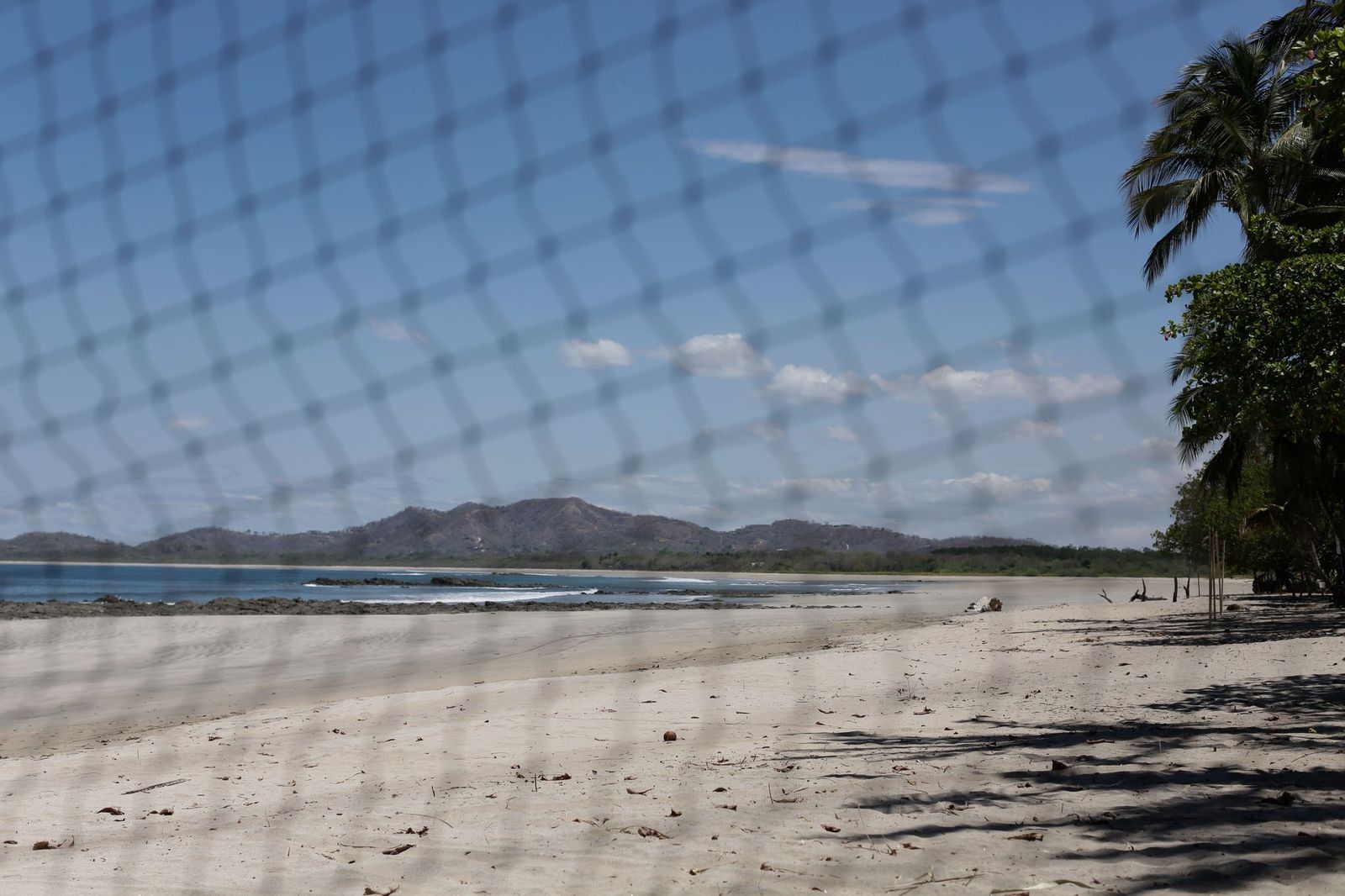
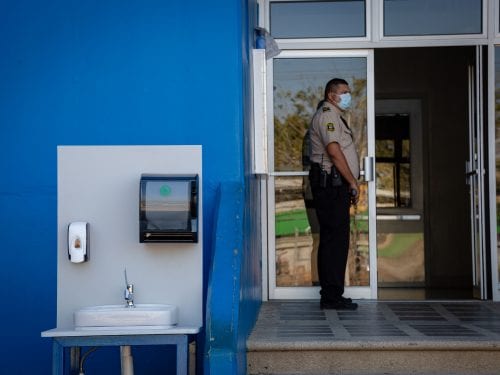
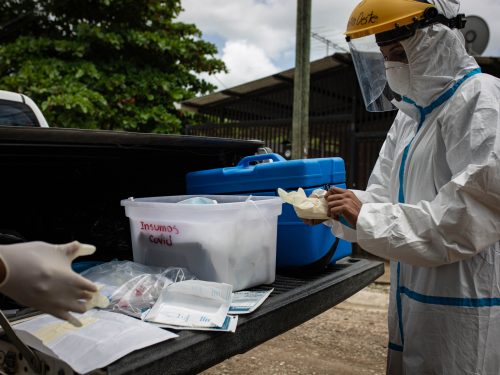


Comments